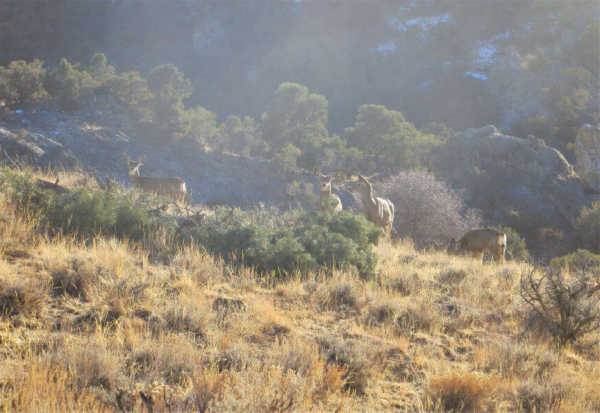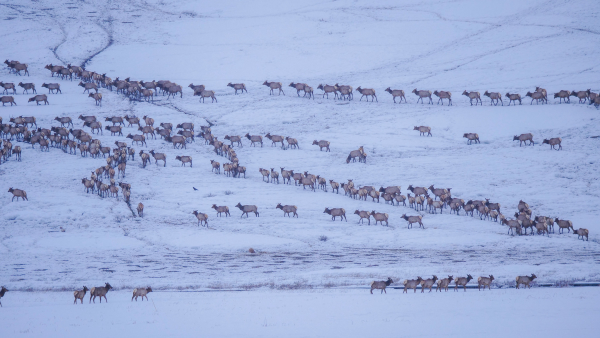MDF Spends $9.9 Million Matched by $35.8 Million for Conservation

Over the last two years, the Mule Deer Foundation has invested $9.9 million that was matched by $35.8 million in agency and partner funds as well as volunteer in-kind hours to implement 200 conservation projects across the West. This overall investment of $45.7 million resulted in 264,685 acres being improved through wildlife research, habitat conservation and restoration, water improvements, and more. In addition, 115 miles of fencing was removed or converted to wildlife-friendly designs to help reduce barriers to wildlife movement. These significant results show the organization’s strong emphasis on achieving its mission of “ensuring the conservation of mule deer, black-tailed deer, and their habitat.” A new video released today entitled “Ensuring the Future” shows these conservation efforts and MDF’s vision for the future of mule deer and black-tailed deer conservation.??
“Even in the middle of the COVID-19 pandemic, the Mule Deer Foundation continued to increase our conservation footprint to make a difference for deer across the West. When tallied up, our $9.9 million investment was matched 3.6 to 1 by our partners and through our volunteers’ hard work,” commented Mule Deer Foundation President/CEO Joel Pedersen. “Moving forward, MDF will continue to use science to identify the priority landscapes where deer need the most help. This will allow us to focus on doing the right work, in the right place, at the right scale to ensure that we have healthy, sustainable populations of deer that can be enjoyed by future generations.”
Habitat improvements are the key to successful conservation of mule deer and black-tailed deer. Through new migration research, state and federal agencies have identified priority corridor and seasonal range habitats. Using this information, MDF and our partners have focused on projects like habitat improvement, invasive weed management, and transitioning to wildlife-friendly fencing in the places where we can make the greatest conservation impacts for mule deer populations. MDF’s project funding is generated through grants, federal land stewardship agreements, chapter fundraisers, and more. This funding is leveraged with other partner dollars and in-kind volunteer efforts to maximize the impact on the landscape.
As an example, in Nevada’s Toano Mountains—home to a mule deer herd of around 4,000 animals—MDF’s Great Basin Chapter matched a grant of $20,000 from the Bass Pro Shops and Cabela’s Outdoor Fund that leveraged an additional $120,000 from the Nevada Heritage Fund. The restoration project completed by the Nevada Department of Wildlife removed invasive juniper on 400 acres of sagebrush, ultimately improving over 3,000 acres of winter range habitat for the top priority mule deer migration herd in Nevada. Other projects include efforts to control invasive cheatgrass in Idaho and Wyoming, replanting sagebrush or clearing burned trees after fires in California and Colorado, transitioning to wildlife-friendly fencing in Arizona and Montana, and thinning dense forest to reduce potential for catastrophic wildfire as well as improve forage for deer and other wildlife in Utah and other states.
To explore future opportunities to improve conservation efforts and discuss the current issues impacting mule deer across the West, MDF will be hosting its first Mule Deer Summit today during the Western Hunting & Conservation Expo in Salt Lake City. The Mule Deer Summit is designed to identify and discuss the most pressing issues that mule deer are currently experiencing, and those areas where MDF can best apply resources and efforts in coordination. The summit will include presentations by MDF staff and top mule deer experts talking about using science to direct conservation action, how states and the federal government are working through Secretarial Order 3362 to step up projects, the impacts of development on mule deer, and how chronic wasting disease is affecting mule deer and hunting.
“Our conservation efforts in 2020 and 2021 have been incredible, and we are excited to host the Mule Deer Summit to learn how we can work with our partners to increase our project delivery even more,” concluded Pedersen.





